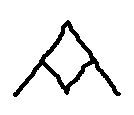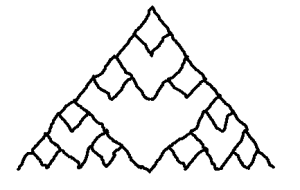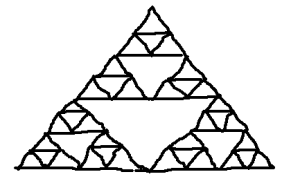Duality: Fractals, Computers and the Mind
Two, the next number in the sequence of counting numbers, is a very different type of number to its predecessor, the humble one. It is a prime number, unlike one, but it is also an even number — all other prime numbers must be odd like one, otherwise they would be divisible by two and thus not be prime. It is a very useful number to have — this is evidenced by the plethora of words associated with two, such as a pair, a couple, second, a half, &c.
Two plays a critical role in the function of computers — they use a binary number system, an on or off state, to represent numbers. It is one of the simplest number systems, as every digit is either 0 or 1. Yet, when strung together, each digit represents a power of two — for example, the number 56 in binary is 111000, or 25 + 24 + 23 + 0·(22 + 21 + 20). Everything inside a computer is ultimately represented with strings of these numbers, using various encoding to represent something such as text, an image, or an executable.
It is this on or off duality that makes computers so good at what they do. They are logical — that is to say, they can very easily deal with true or false statements. As most (if not all) statements either are true or false, it means that it is trivial for a computer to evaluate many real-world statements, if of course they are told how to do so.
The mind, however, is not like a computer. Or is it? It depends on your point of view. If one is a materialist, then one believes that the mind is part of the brain, and thus functions a bit like a very complex, organic computer. If, however, one is a dualist, they believe that the mind is not part of the brain. It is separate, a non-physical entity that cannot be located in space and time, perhaps bestowed upon you by a higher being. At first, this seems like a sound idea — one’s own experience seems private and subjective, not public and objective like material things; the mental and the material, a metaphysical dichotomy that together create a whole human being.
But is this really the case? The advancements of neuroscience during the 20th Century seem to suggest that this view is outdated — damage to the brain has a significant impact on those who suffer from it, and even in more day-to-day life, many things have been shown to affect the brain, such as caffeine, alcohol, and other drugs, as well as environmental factors. As well as the biological aspect of the brain, there are also the philosophical problems with the theory. How would a non-physical spirit or soul influence the physical world? To do so, it would have to create matter or energy, which is a violation of the physical laws of the universe. If it were possible, I feel confident in saying that an enterprising and morally dubious individual would have profiteered from mind power plants by now. Another problem is that it would be impossible to know whether other people had minds, or if it was only you, the subject of your experience. The very word “solipsism” makes one feel alone.
Now, back to two. There is an interesting doodle one can draw based on two. Start with a point, and draw two lines at an angle from it, like in the image.
Then, at the ends of each leg, draw two more lines at the same angle.
Continue to do this, except where two legs touch.
Then draw lines across, like so.
This is a fractal called a Sierpiński triangle, and no matter how long one continues the doodle, one will always see this type of pattern emerge. I think it’s pretty cool.
-Dan



